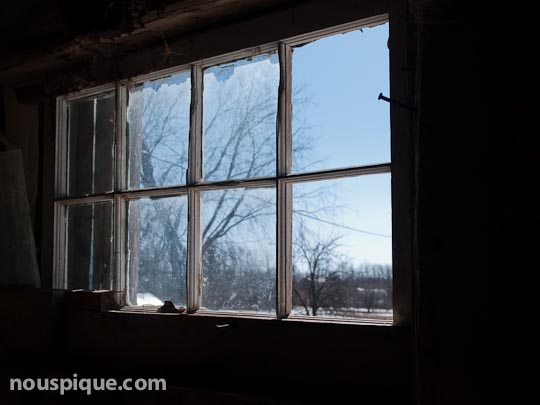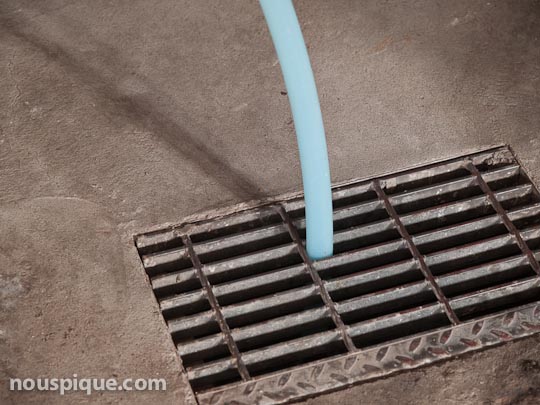I’ve committed an act of theft and, if I’m lucky, I’ll get away with it. I’ve stolen some lives and a piece of property and I’ve hawked them for a novel. My novel is called The Land and I plan to release it on May 7th or thereabouts. Here’s what I did: I took four people (my sister-in-law, her husband, and their two boys), I ran off with their organic farm, and tossed them all into a bag along with a few unruly ideas to spice things up. Then I shook everything together, like Shake ‘n’ Bake, and when I tumbled out the broiled bits, I had myself a novel.
Normally, when you read the disclaimer at the beginning of a novel, it says something like: “This is a work of fiction. Any resemblance to real people living or dead is purely coincidental.” I take a different approach and state that “any resemblance to real people living or dead is purely deliberate and owes entirely to the author’s failure of imagination. Nevertheless, this remains a work of fiction.”
I have to tread carefully here because there’s always the risk that, for all my disclaimers, inexperienced readers may still believe that when they read the tale of George Barnes, organic farmer, husband, father, they are really sorting through my family’s dirty laundry. The wording of my disclaimer is an ever-so-slightly cynical dig at writers who go to great lengths (maybe on the advice of their lawyers) to perpetuate the myth that words create a separate reality divorced from our own, that writers mediate between some fairy land of imagination and terra firma beneath our feet. That’s poop of course and I have the pictures to prove it.
The fact is – and I write from experience here – everything I write is fiction, even the parts that are true. Or did I get that backwards? Sometimes everything is factual, even the parts I make up. It doesn’t matter which way I put things, it all comes out the same. On the weekend, I went back to The Land, in a manner of speaking, and took photos to document the truth of my fiction.
Remarkably, I discovered some old crates that had been used to ship bottles of embalming fluid. I use the word “remarkably” because my novel opens in the embalming room of a local undertaker who is preparing George’s mother. Life imitating art? I mean, what are the odds that I’d find empty crates of embalming fluid on the site I imagined for my story? It turns out the odds are pretty good when you consider where my brother-in-law first lived. (Yes, from what I understand, his family actually lived in the funeral home.)
George has a problem. Now that he’s buried his mother, she haunts his dreams. She wants to tell him something, but can’t because the undertaker has wired her jaw shut. In time, George’s dreams fade, but he’s convinced his mother has been trying to tell him that he shouldn’t have arranged for her embalming; he should have put her straight into the ground, au naturel. When George’s oldest boy runs the tractor over George’s wife, George has to decide what to do with the body: follow official rules and regulations? or side-step protocol and quietly bury her on the land where his family has lived for generations? Below, is the cooler where George stores organic produce until he takes it to market on weekends. This is where George puts Emily’s body while he’s deciding what to do with her. If you know anything at all about my family, you should be noticing an uncanny parallel between my novel and my life.
In addition to a son who runs over his mother with a tractor, there’s a younger boy who talks to people who aren’t there and likes to eat crickets. Deer figure prominently in my novel, too. On a couple occasions, the two sons hunt and field dress deer. Unfortunately, it’s not a good idea to give knives and guns to psychotic children. Before you can say “gooey entrails,” the father and his sons are making a stand in their barn, surrounded by local police, a SWAT team, the county coroner, staff from the CAS, and the organic foods inspector.
That’s more or less what has happened to me in real life. I’ve provided a few more photos to give a sense of the setting. Below is a barn window which affords the boys a good perch during the shoot-out. Using a ball peen hammer, they knock the glass out of one pane and rest the barrel of a Winchester hunting rifle on the casement.

Below is a drain in the concrete floor of the barn. With the blue hose, you’d think the drain was used during the manufacture of maple syrup, but really this is where the blood goes.

